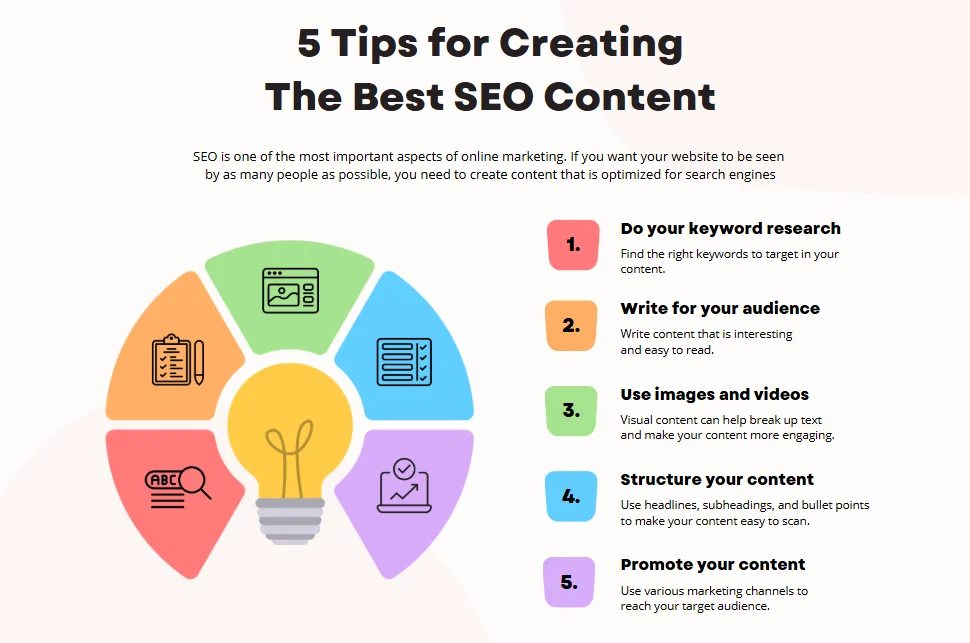Welcome, fellow bloggers and digital enthusiasts! If you’re here, you’re probably wondering how to level up your SEO for bloggers/blog’s visibility and transform it into a lean, mean, search engine-pleasing machine. In this comprehensive guide, we’re diving deep into the world of on-page SEO—a crucial blueprint that can boost your rankings, drive more traffic, and ultimately make your blog the talk of the digital town.
In this article, we’ll explore every nook and cranny of on-page SEO, demystifying terms, techniques, and trends that every blogger should know. Ready to unlock the secrets? Let’s dive in!
Understanding the SEO for Bloggers Landscape
What is SEO?
SEO, or Search Engine Optimization, is the art and science of enhancing your blog to rank higher on search engines like Google, Bing, and Yahoo. Think of it as tuning your blog’s engine to perform better on the digital highway. When done right, SEO helps search engines understand your content and rewards you with higher visibility in search results.
“SEO is not about gaming the system anymore; it’s about learning how to play by the rules.”
– An industry veteran
Why is SEO Essential for Bloggers?
Imagine having a beautifully crafted blog hidden in the darkest corner of the internet. Without proper SEO, even the most engaging content might never reach your target audience. By optimizing your on-page elements, you ensure that search engines can easily crawl, index, and rank your content. This means more organic traffic, increased credibility, and ultimately, higher revenue potential if you monetize your blog.
On-Page SEO Techniques
On-page SEO is your first line of defense (and offense) in the digital arena. Let’s break down the core techniques that will transform your blog into an SEO powerhouse.
1. Keyword Research
Keywords are the building blocks of SEO. They’re the words and phrases that users type into search engines. Choosing the right keywords is crucial because it connects your content with what your audience is actively searching for.
Tools for Keyword Research
There are numerous tools available to help you identify high-impact keywords:
| Tool | Features | Price | Link |
|---|---|---|---|
| Google Keyword Planner | Free, integrated with Google Ads, great for beginners | Free | Google Keyword Planner |
| SEMrush | Competitor analysis, keyword difficulty, trends | Subscription-based | SEMrush |
| Ahrefs | Comprehensive site analysis, keyword tracking | Subscription-based | Ahrefs |
| Moz Keyword Explorer | Easy-to-use interface, SERP analysis | Freemium | Moz |
Using these tools can give you a clear picture of what your target audience is looking for and how competitive your chosen keywords are.
2. Content Optimization
Creating great content is half the battle. The other half is ensuring that your content is optimized for both your readers and search engines.
Writing Engaging Content
Your content should provide real value, be engaging, and speak directly to your audience. Write as if you’re having a conversation with a friend. Use anecdotes, humor, and relatable examples to keep things lively.
Imagine explaining SEO to a friend over coffee. You wouldn’t bombard them with jargon; you’d break things down into digestible, interesting nuggets. That’s the vibe you want!
Content Structure & Readability
A well-structured article with clear headings, bullet points, and short paragraphs can make a huge difference. Use subheadings (like the ones you see here) to guide your readers through your content. Tools like Hemingway Editor or Grammarly can help you maintain readability.
3. Meta Tags and Descriptions
Meta tags are like the front cover of a book—they give search engines a glimpse of what your content is about.
Crafting Effective Title Tags
Your title tag is the clickable headline that appears in search results. It should be enticing and include your primary keyword. Keep it under 60 characters to ensure it displays fully.
Writing Persuasive Meta Descriptions
Meta descriptions provide a summary of your page’s content. Although they don’t directly influence rankings, a compelling meta description can improve your click-through rate (CTR). Aim for 150-160 characters that spark curiosity.
4. Image Optimization
Images are a vital part of your content. Not only do they break up text and make your article more engaging, but they also provide an opportunity for additional SEO.
Alt Text and File Names
Always add descriptive alt text to your images. This not only helps visually impaired users but also provides context for search engines. Make sure your file names are clear and relevant to the image content.

Technical SEO Considerations
Even if your content is top-notch, technical issues can undermine your SEO efforts. Let’s explore some key technical elements.
Page Speed and Performance
Nobody likes a slow-loading page. A delay of even a few seconds can increase your bounce rate significantly. Use tools like Google PageSpeed Insights to evaluate and improve your site’s performance. Faster pages lead to happier readers and better search rankings.
Mobile Optimization
With an ever-increasing number of users accessing content via mobile devices, ensuring your site is mobile-friendly is non-negotiable. Responsive design and mobile optimization can make or break your SEO success.
Enhancing User Experience (UX)
User experience (UX) plays a pivotal role in on-page SEO. Happy readers stay longer, share more, and convert better.
Site Navigation and Internal Linking
A clear, intuitive navigation system helps users find what they’re looking for. Internal linking—linking related articles and pages—keeps readers on your site longer and helps distribute SEO value throughout your site.
Call to Action Optimization
Whether you want readers to subscribe to your newsletter, download an ebook, or make a purchase, your call to action (CTA) should be compelling and clearly visible. Experiment with different placements, colors, and wording to see what converts best.
Leveraging Data & Analytics
Data is your best friend when it comes to SEO. By analyzing your performance, you can tweak your strategy and focus on what works.
Using Google Analytics
Google Analytics is a powerful tool that provides insights into your traffic, user behavior, and conversion metrics. By understanding where your visitors come from and what they do on your site, you can refine your content strategy for maximum impact. For more details, visit Google Analytics.
Interpreting SEO Metrics
Key metrics such as bounce rate, average session duration, and conversion rate offer valuable insights. Regularly reviewing these metrics can help you identify areas for improvement and ensure your blog is on track to achieve its goals.
Common SEO Mistakes to Avoid
Even seasoned bloggers can slip up. Here are some common pitfalls:
- Keyword Stuffing: Overusing keywords can make your content sound robotic.
- Neglecting Mobile Optimization: Ignoring mobile users is a surefire way to lose traffic.
- Ignoring Meta Descriptions: A poorly crafted meta description can lower your CTR.
- Overlooking Internal Links: Failing to connect your content can hurt your overall SEO.
“In SEO, consistency beats intensity every time.”
– A seasoned SEO expert
Creating a Content Calendar
Consistency is key in the blogging world. A well-planned content calendar helps you maintain a steady flow of fresh, relevant content. Plan your topics, schedule your posts, and leave room for trending topics or industry news.
The Role of Social Media in SEO
Social signals might not be a direct ranking factor, but they certainly influence your overall online presence. Social media helps amplify your content, drive traffic, and build brand awareness.
Social Sharing and Engagement
Encourage your readers to share your posts on social media. Use eye-catching graphics, witty captions, and engaging content to boost your social shares. When your content gets shared widely, it sends positive signals to search engines.
Real-Life Examples and Case Studies
Seeing is believing. Let’s look at some real-life examples of successful on-page SEO strategies:
Successful SEO Strategies in Action
Consider a popular lifestyle blog that revamped its entire content structure. By focusing on keyword research, optimizing meta tags, and enhancing internal linking, the blog saw a 70% increase in organic traffic within three months. Case studies like these prove that with a little elbow grease and the right strategy, amazing results are within reach.
Future of SEO for Bloggers
The digital landscape is constantly evolving. Staying ahead of trends can give you a competitive edge.
Emerging Trends
Voice search, video content, and interactive media are just a few trends reshaping SEO. As search engines become smarter, optimizing for these trends will become increasingly important. Keep an eye on industry news and adapt your strategy accordingly.
AI and SEO
Artificial Intelligence is transforming SEO. From AI-powered content creation tools to advanced data analytics, embracing AI can streamline your efforts and provide deeper insights. It’s like having a super-smart assistant that never sleeps.
Visual Insights: Bar Chart of On-Page SEO Impact
Below is a simple bar chart representing the impact of various on-page SEO factors. This visual guide can help you prioritize your efforts:

This chart is a quick reference to remind you that while every factor is important, some (like page speed and UX) deserve extra attention.
Leveraging External Resources for Continued Learning
To further enhance your SEO knowledge, check out these reputable sources:
- Moz Blog: An excellent resource for SEO insights and best practices.
- Search Engine Journal: Stay updated with the latest trends and tips.
- Neil Patel: Practical advice from one of the leading voices in digital marketing.
Putting It All Together: A Practical On-Page SEO Blueprint
Now that we’ve covered the fundamentals, let’s outline a step-by-step blueprint to apply these on-page SEO techniques:
- Start with Keyword Research:
Use tools like Google Keyword Planner and SEMrush to find the best keywords for your niche. - Craft High-Quality Content:
Focus on engaging writing, proper formatting, and clear structure. Always keep your readers in mind. - Optimize Meta Tags and Descriptions:
Write compelling title tags and meta descriptions that include your target keywords. - Enhance Visual Content:
Optimize images with alt text and relevant file names. - Improve Technical SEO:
Boost your page speed and ensure your site is mobile-friendly. - Focus on User Experience:
Create intuitive navigation, use internal links, and add clear calls to action. - Monitor Your Progress:
Regularly check your metrics using Google Analytics and adjust your strategy based on performance data. - Stay Updated:
SEO is an ever-evolving field. Keep learning from top SEO blogs and industry updates.
Real-World Success: A Mini Case Study
Consider Sarah, a lifestyle blogger who decided to overhaul her blog’s on-page SEO. She began by meticulously researching keywords and revamping her content with better structure and visuals. Within six months, her blog’s organic traffic increased by over 80%! Her secret? Consistency, quality, and a willingness to adapt to emerging trends. Her story is a perfect example of how actionable SEO strategies can yield incredible results.
Wrapping Up: Your Path to SEO Mastery
On-page SEO might seem daunting at first, but it’s all about taking one step at a time. With a clear strategy, regular updates, and a keen eye on data analytics, your blog can climb the ranks and capture the audience it deserves.
As you embark on your SEO journey, remember that patience and persistence are key. Just as Rome wasn’t built in a day, a top-ranking blog takes time, effort, and constant refinement. Embrace the learning process, experiment with new techniques, and most importantly, have fun along the way. After all, every improvement is a win worth celebrating!
Conclusion: Looking Ahead
The world of SEO is a dynamic, ever-changing landscape. As we look ahead, the integration of AI, voice search, and new content formats will continue to shape how we approach on-page optimization. For bloggers, this means endless opportunities to innovate, connect with audiences, and turn passion into performance. Keep your strategies fresh, embrace emerging trends, and never stop learning—the digital horizon is wide open and filled with promise.
FAQs
What is the most important aspect of on-page SEO for beginners?
A1: For beginners, starting with strong keyword research and creating high-quality, engaging content is essential. These foundations set the stage for further optimization.
How often should I update my SEO strategies?
A2: SEO is not a one-time effort. Regular updates every few months, alongside staying current with industry trends, will keep your blog competitive.
Can technical SEO really impact my blog’s ranking?
A3: Absolutely. Technical factors like page speed, mobile optimization, and a clean site structure directly affect both user experience and search engine rankings.
What role does social media play in on-page SEO?
A4: While social signals may not directly affect rankings, they enhance your online presence by driving traffic and increasing engagement, which indirectly benefits SEO.
How can I measure the success of my on-page SEO efforts?
A5: Use tools like Google Analytics and Google Search Console to track key metrics such as organic traffic, bounce rate, and keyword rankings. Regular analysis will help you fine-tune your strategies for even better results.






